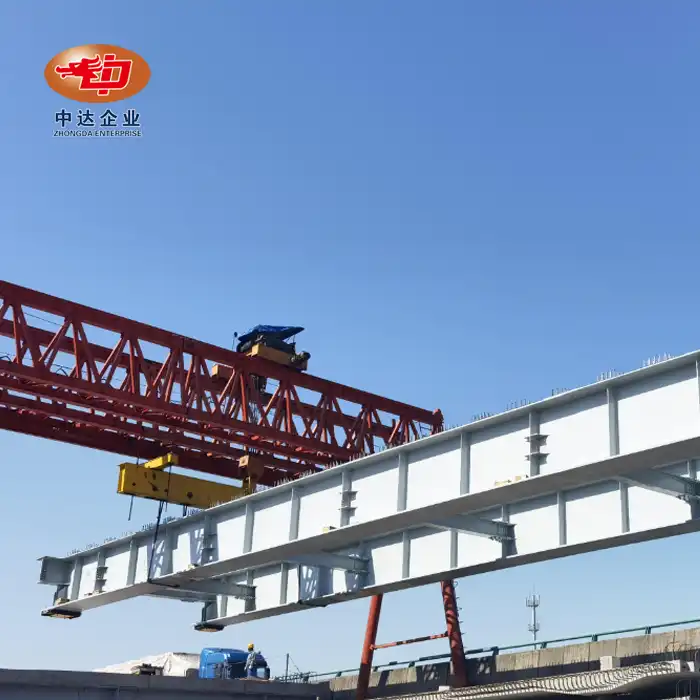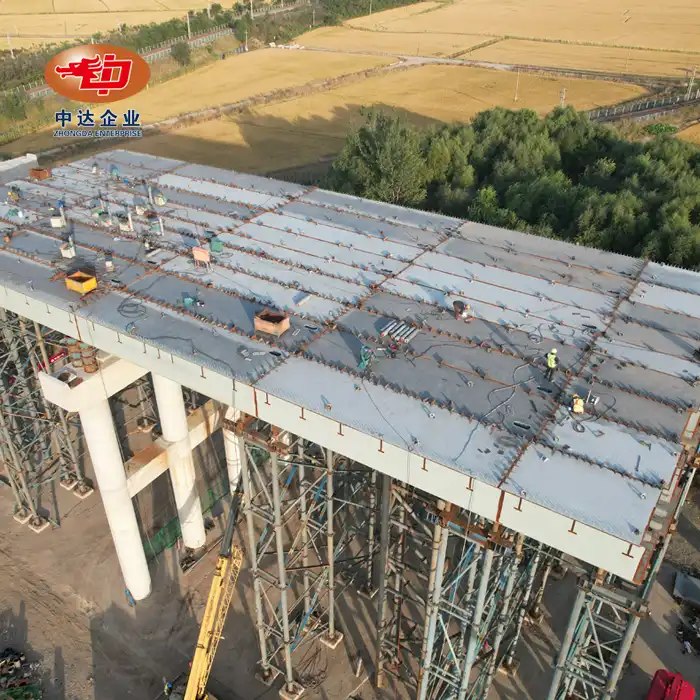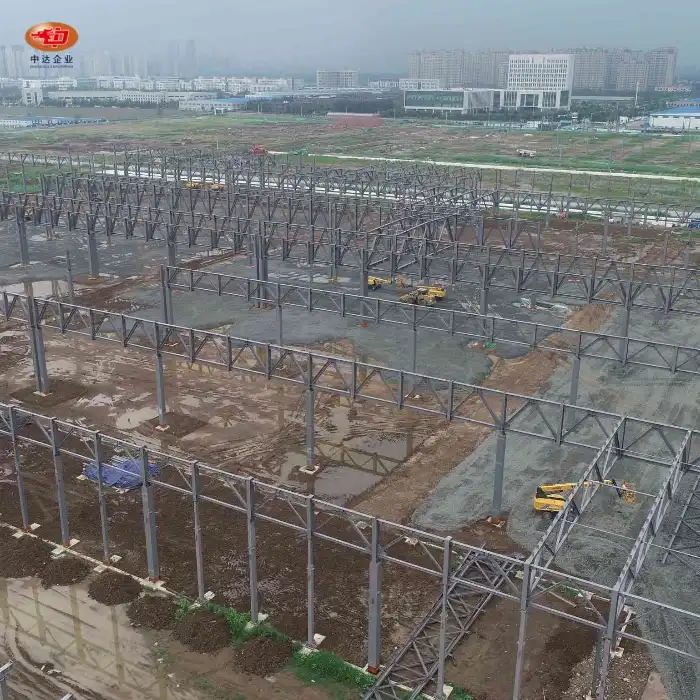At Shenyang Zhongda Steel Structure Co., Ltd., we specialize in designing and manufacturing steel structures that meet the highest seismic safety standards. Our expertise in BIM-driven prefabrication and ultra-thick plate cutting (±0.2mm) allows us to create precise, high-performance steel components for earthquake-resistant buildings. With our ISO 9001/14001/OHSAS 45001 and EN 1090 certifications, you can trust in the quality and reliability of our seismic-resistant steel solutions.
Understanding Earthquake Forces and Structural Behavior
The Nature of Seismic Forces
Seismic forces are complex and dynamic, posing unique challenges for structural engineers. During an earthquake, the ground moves in multiple directions, subjecting buildings to intense lateral and vertical forces. These forces can cause structures to sway, twist, and potentially collapse if not properly designed.
The magnitude and frequency of seismic waves vary depending on factors such as the earthquake's intensity, distance from the epicenter, and local soil conditions. Understanding these variables is crucial for developing effective seismic design strategies for steel structures.
Structural Response to Seismic Loading
Steel structures respond to seismic forces in distinct ways. Their behavior is influenced by factors such as the building's height, mass distribution, and overall geometry. During an earthquake, a steel structure experiences:
- Lateral displacement: The building sways side to side
- Inter-story drift: Differential movement between floors
- Torsion: Twisting of the structure due to asymmetrical layouts
Engineers must account for these responses when designing seismic-resistant steel structures. The goal is to create a system that can flex and absorb energy without compromising its overall integrity.
Importance of Ductility in Seismic Design
Ductility is a critical property in seismic design for steel structures. It refers to a material's ability to deform plastically without fracturing. In the context of earthquake engineering, ductile structures can:
- Absorb and dissipate seismic energy
- Undergo large deformations without sudden failure
- Redistribute loads to prevent localized damage
Steel's inherent ductility makes it an excellent choice for earthquake-resistant buildings. By carefully selecting steel grades and designing connections, engineers can enhance a structure's overall ductility and improve its seismic performance.
Key Principles of Seismic Design for Steel Structures
Lateral Force Resisting Systems
The cornerstone of seismic design for steel structures is the implementation of effective lateral force resisting systems (LFRS). These systems are designed to withstand and transfer horizontal loads generated by earthquakes. Common LFRS in steel buildings include:
- Moment-resisting frames: Rigid connections between beams and columns that resist lateral forces through flexural action
- Braced frames: Diagonal members that provide additional stiffness and strength
- Shear walls: Vertical elements that resist horizontal forces through in-plane shear
The choice of LFRS depends on factors such as building height, architectural requirements, and local seismic conditions. Engineers must carefully analyze each option to determine the most suitable system for a given project.
Energy Dissipation and Damping Mechanisms
Incorporating energy dissipation and damping mechanisms is crucial for improving a steel structure's seismic performance. These systems help reduce the magnitude of forces experienced by the building during an earthquake. Common approaches include:
- Base isolation: Separating the structure from the ground using flexible bearings
- Viscous dampers: Devices that convert kinetic energy into heat
- Tuned mass dampers: Large masses that counteract building motion
By integrating these mechanisms, engineers can significantly enhance a steel structure's ability to withstand seismic events while minimizing damage to both structural and non-structural components.
Capacity Design and Load Path Considerations
Capacity design is a fundamental principle in seismic engineering for steel structures. This approach involves:
- Identifying critical elements that will yield during an earthquake
- Ensuring these elements have sufficient ductility to deform without failure
- Designing non-critical elements to remain elastic and maintain overall stability
Additionally, engineers must carefully consider load paths through the structure. This involves ensuring that seismic forces can be effectively transferred from the point of application to the foundation. Proper detailing of connections and careful analysis of force distribution are essential for creating a robust seismic design.
Advanced Techniques and Innovations in Seismic Steel Design
Performance-Based Seismic Design
Performance-based seismic design (PBSD) is an advanced approach that focuses on achieving specific performance objectives rather than simply meeting code requirements. In PBSD, engineers:
- Define clear performance goals for different earthquake scenarios
- Use advanced analysis techniques to predict structural behavior
- Optimize designs to meet both safety and economic objectives
This approach allows for more tailored and efficient seismic designs, particularly for complex or critical steel structures. PBSD can lead to innovative solutions that better balance safety, functionality, and cost-effectiveness.
Smart Materials and Adaptive Systems
Emerging technologies are revolutionizing seismic design for steel structures. Smart materials and adaptive systems offer exciting possibilities for enhancing earthquake resistance. Examples include:
- Shape memory alloys: Materials that can return to their original shape after deformation
- Magnetorheological dampers: Devices that can adjust their damping properties in real-time
- Self-centering systems: Mechanisms that help buildings return to their original position after an earthquake
These innovations promise to create more resilient and responsive steel structures capable of adapting to seismic events and minimizing damage.
BIM and Computational Design in Seismic Engineering
Building Information Modeling (BIM) and advanced computational tools are transforming seismic design practices for steel structures. These technologies enable:
- More accurate modeling of complex structural behaviors
- Improved coordination between architectural and structural elements
- Optimization of steel member sizes and connection details
By leveraging these tools, engineers can create more efficient and effective seismic designs, reducing material costs and improving overall performance. At Shenyang Zhongda Steel Structure Co., Ltd., we utilize cutting-edge BIM technology to ensure precision and efficiency in our seismic-resistant steel solutions.
Conclusion
Seismic design principles for steel structures in earthquake zones are essential for creating resilient and safe buildings. By understanding earthquake forces, implementing key design strategies, and embracing innovative technologies, engineers can develop steel structures capable of withstanding seismic events. As we continue to advance our knowledge and techniques, the future of earthquake-resistant steel construction looks promising, offering enhanced safety and performance in high-risk areas.
FAQs
1. What makes steel a good choice for earthquake-resistant structures?
Steel's ductility and strength-to-weight ratio make it ideal for seismic design. It can absorb energy and deform without sudden failure.
2. How often should seismic designs be updated?
Seismic design codes are typically reviewed and updated every few years. Existing structures should be assessed periodically, especially after significant seismic events or changes in local risk assessments.
3. Can older steel buildings be retrofitted for improved seismic performance?
Yes, many older steel structures can be retrofitted with techniques such as adding bracing, strengthening connections, or incorporating damping systems to enhance their earthquake resistance.
Expert Steel Solutions for Seismic Design | Zhongda Steel
At Shenyang Zhongda Steel Structure Co., Ltd., we offer cutting-edge steel solutions for seismic-resistant structures. Our BIM-driven prefabrication and precision manufacturing ensure optimal performance in earthquake zones. As a leading steel structure manufacturer, we deliver innovative, high-quality products tailored to your seismic design needs. Contact us at Ava@zd-steels.com for expert guidance on your next earthquake-resistant project.
References
1. American Institute of Steel Construction. (2022). Seismic Provisions for Structural Steel Buildings (ANSI/AISC 341-22). Chicago, IL: AISC.
2. Bruneau, M., Uang, C. M., & Sabelli, R. (2011). Ductile Design of Steel Structures. New York: McGraw-Hill Education.
3. Chopra, A. K. (2017). Dynamics of Structures: Theory and Applications to Earthquake Engineering. Upper Saddle River, NJ: Pearson.
4. Elnashai, A. S., & Di Sarno, L. (2008). Fundamentals of Earthquake Engineering. Chichester, UK: John Wiley & Sons.
5. Naeim, F. (2001). The Seismic Design Handbook. Boston, MA: Springer.
6. Popov, E. P., & Bertero, V. V. (1980). Seismic Behavior of Ductile Moment-Resisting Reinforced Concrete Frames. ACI Special Publication, 63, 247-292.

















_副本_1754121416739.jpg)
_副本_1757053936097.jpg)
_副本_1756187900835.jpg)
_副本_1755241212578.png)
